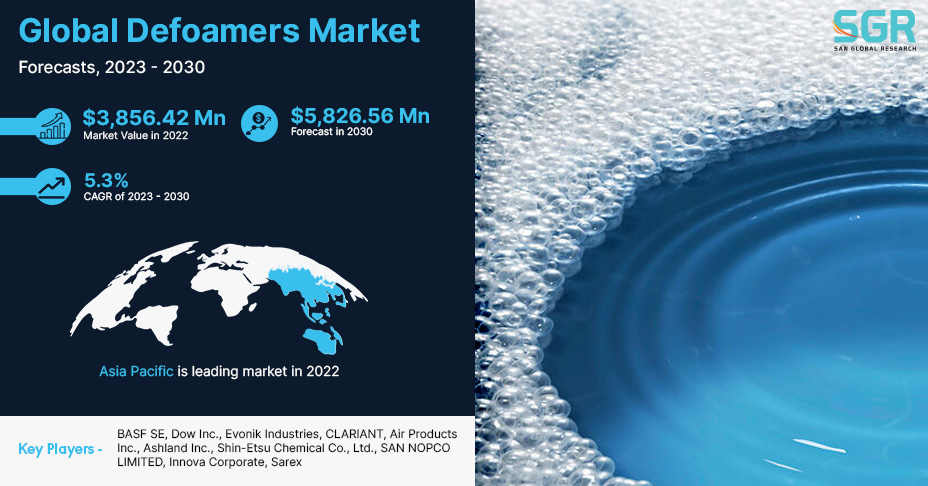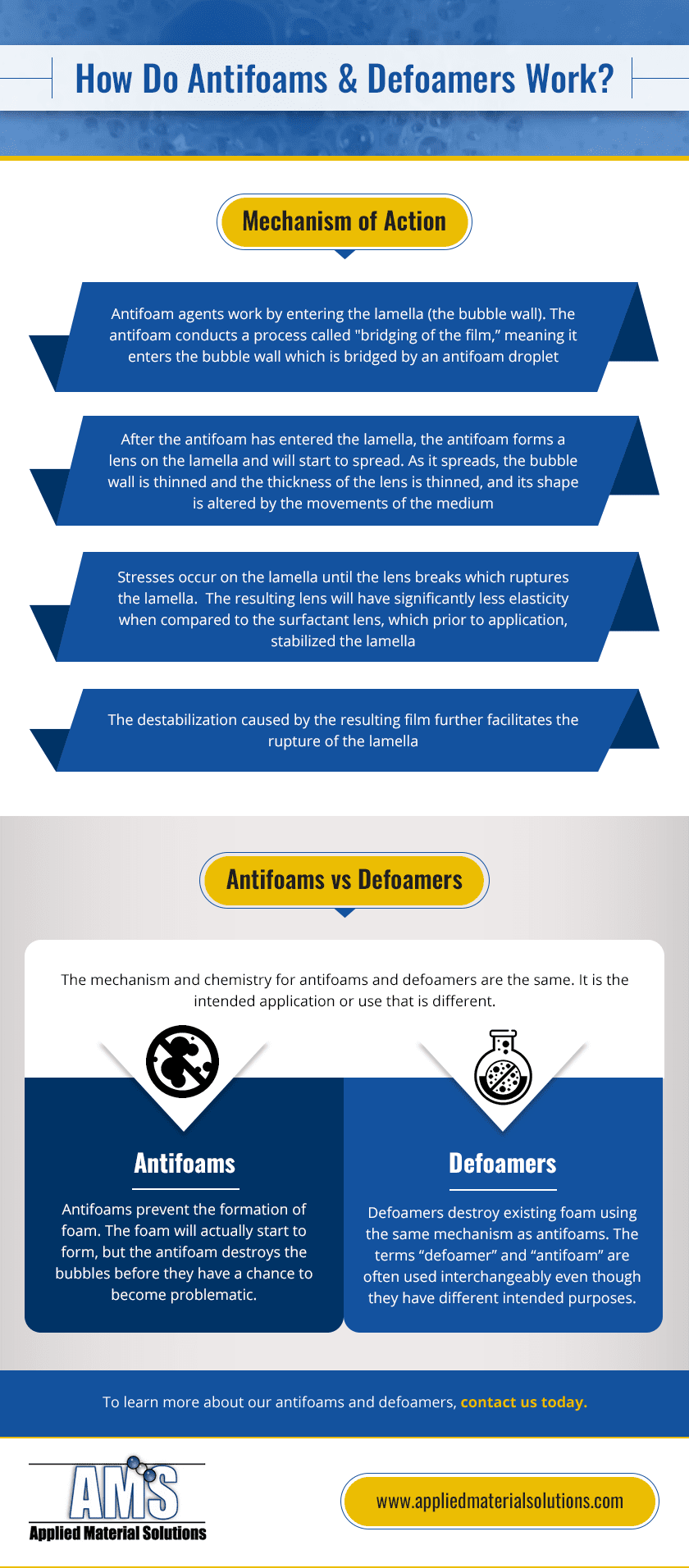Choosing the Right Defoamers for Your Industry Needs
Choosing the Right Defoamers for Your Industry Needs
Blog Article
The Duty of Defoamers in Enhancing Product Quality and Efficiency
Defoamers offer as important ingredients that minimize this issue, guaranteeing smoother manufacturing operations while boosting the practical and visual features of the final products. The choice of the suitable defoamer can be essential to attaining optimum outcomes, elevating important questions about formula compatibility and performance metrics that merit additional exploration.
Recognizing Defoamers
Recognizing the duty of defoamers is essential for maintaining product quality across various industries. Defoamers are chemical additives designed to prevent the formation and reduce of foam in liquid systems, which can adversely affect processes such as mixing, filling, and surface area stress. Frothing can cause inadequacies, item issues, and endangered visual allure, making defoamers an essential part in making operations.
In industrial applications, defoamers help to enhance item uniformity and security. In the paint and layers market, foam can interfere with the application process and the final coating. In a similar way, in food and beverage manufacturing, extreme foam can impede bottling and packaging efficiency (defoamers). The effective use of defoamers not just makes sure smoother production processes but also adds to premium product efficiency.
Furthermore, the option and formulation of a defoamer should straighten with details application needs, such as compatibility with other ingredients, effectiveness under differing temperature level and pH problems, and possible regulatory restrictions. Inevitably, comprehending defoamers' features and their value in various solutions is crucial for optimizing production and ensuring the best quality end products.
Kinds Of Defoamers
Defoamers can be classified right into numerous types based on their structure and mechanism of action. The main types consist of silicone-based, non-silicone natural, and not natural defoamers.
Silicone-based defoamers are amongst one of the most reliable, mostly as a result of their capability to spread out rapidly on the liquid surface area and interrupt foam formation. Their special chemical structure permits for superior stability, making them ideal for high-temperature applications and environments with differing pH degrees.
Non-silicone organic defoamers, commonly made up of natural oils or fats, are valued for their biodegradability and reduced poisoning. These are commonly made use of in food and beverage applications where security and ecological effect are critical.
Inorganic defoamers, that include materials like talc or calcium carbonate, act by boosting the density of the liquid, thus minimizing foam security. They are commonly made use of in commercial procedures where compatibility with other materials is not a concern.
Each sort of defoamer has distinct benefits and constraints, enabling tailored solutions depending on the details lathering problems experienced in various applications. Understanding these distinctions is vital for enhancing performance and achieving wanted product quality.
Applications Throughout Industries
Countless markets leverage defoamers to boost item quality and operational performance. In the food and beverage sector, defoamers are crucial in procedures such as brewing and milk manufacturing to avoid foam development, which can cause ineffectiveness and product incongruity. By managing foam, manufacturers can make certain much better return and a much more consistent product.
In the pharmaceutical sector, defoamers play a crucial role in the formula of liquid medicines, where excessive foam can hamper blending and precise application. Their use aids maintain the honesty of the formulations and promotes smoother production procedures.
The paint site here and coverings sector also depends on defoamers to boost the performance of products throughout application. By minimizing foam, these ingredients make certain a smoother finish and improve the visual qualities of the last item.

Advantages of Making Use Of Defoamers
While the application of defoamers varies across industries, their advantages consistently boost product high quality and procedure efficiency. One considerable advantage is the decrease of foam formation during producing procedures, which can or else bring about production delays and disparities in product quality. By decreasing foam, defoamers enable a smoother circulation of products, promoting extra effective operations and reducing the likelihood of tools malfunctions.
Additionally, using defoamers can boost the appearance and texture of end products. In industries such as coverings, paints, and food handling, extreme foam can jeopardize the aesthetic appearances and general quality, while the ideal defoamer application makes sure an uniform coating and desirable characteristics. Defoamers can contribute to set you back savings by reducing waste during manufacturing and optimizing the usage of raw products.

Picking the Right Defoamer
Picking the appropriate defoamer is crucial for optimizing production processes and guaranteeing product quality. The choice of defoamer influences not only the effectiveness of foam control yet also their explanation the overall performance attributes of the end product. Factors to think about include the type of application, the chemistry of the formulation, and the ecological problems under which the product will be made use of.
Various markets may call for particular defoamer types, such as read this article silicone-based, natural, or polymeric defoamers. Recognizing the compatibility of the defoamer with the main components is important to avoid damaging responses that might compromise item stability. Furthermore, the defoamer's performance in numerous temperatures and pH degrees need to be examined to guarantee consistent efficiency.
Testing the defoamer in small applications can offer beneficial insights right into its performance and suitability. Factor to consider of regulative conformity, particularly in food, drugs, and cosmetics, is critical in picking a defoamer. Eventually, a comprehensive analysis of these elements will certainly result in the option of a defoamer that not only regulates foam efficiently yet also boosts the quality and efficiency of the end product.
Conclusion

In conclusion, defoamers are important additives that considerably improve product quality and performance throughout different industries. The tactical selection and application of defoamers lead to set you back savings, optimized source usage, and enhanced customer satisfaction.
Lathering can lead to ineffectiveness, product defects, and endangered aesthetic appeal, making defoamers a crucial part in producing operations.

Report this page